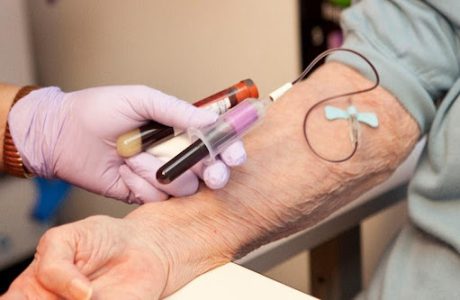A phlebotomy training program might be on your mind if you’re considering a career drawing blood from patients at hospitals, doctor’s offices, or blood donation centers. These professionals play a vital role in the healthcare system by collecting blood samples for tests, transfusions, and donations. It’s a career that requires both precision and compassion, and it all starts with the right phlebotomy training program.
A good training program doesn’t just teach you how to draw blood. It prepares you for the entire scope of the role, from patient interaction to lab safety. Choosing the right program can make the difference between feeling confident on the job and feeling unprepared.
The importance of enrolling in the right phlebotomy training program
Before you begin your journey, it’s important to understand why selecting the right program matters so much. Phlebotomy isn’t just about technical skills. It’s also about professionalism, safety, and patient care. A strong medical training program can ensure you graduate with the knowledge and confidence to succeed in the field.
When evaluating your options, here are four key things to consider:
- Check for state approval and/or accreditation
- Find a program with a well-rounded curriculum
- Research certification requirements
- Evaluate program length and flexibility
1. Check for state approval and/or accreditation
One of the first things to look for in a phlebotomy training program is state approval or accreditation. This means the school/program has been reviewed and meets certain quality standards, and is important for a few reasons:
- Employers value state approved/accredited programs. Graduating from a recognized program shows that you’ve received training that meets industry standards.
- It prepares you for certification. Many certification exams require you to complete an approved program before you’re eligible.
- It ensures you learn the right skills. State approved/accredited programs are more likely to include the necessary curriculum for entry-level phlebotomist training.
When researching schools, ask if their program is approved by the state or recognized by professional organizations. This step could save you time and stress down the road.
2. Find a program that has a well-rounded curriculum
Phlebotomy may sound simple, but the role is more complex than you might think. A strong curriculum can prepare you for every part of the job.
Here are some of the subjects you should expect to learn in a phlebotomist training program:
- Venipuncture and Capillary Collection: Mastering different techniques to collect blood safely.
- Anatomy and Physiology: Understanding veins, arteries, and the circulatory system.
- Specimen Handling and Processing: Properly labeling, storing, and transporting blood samples.
- Infection Control and Safety: Learning how to protect yourself and patients from contamination.
- Patient Interaction: Developing communication skills to put patients at ease, especially those nervous about needles.
- Professionalism and Ethics: Knowing how to handle sensitive information and respect patient rights.
The right program will balance classroom learning with hands-on training in a lab setting. That way, you’ll not only understand the “why” but also the “how” behind every procedure.
3. Consider certification requirements in your state
Phlebotomy certification requirements vary depending on where you live. In some states, certification is required before you can work as a phlebotomist. In others, it may not be mandatory, but many employers still prefer or require certified candidates.
A quality phlebotomy training program will help prepare you for certification exams such as:
- National Healthcareer Association (NHA) Certified Phlebotomy Technician (CPT)
- American Society for Clinical Pathology (ASCP) Phlebotomy Technician
- National Center for Competency Testing (NCCT) Phlebotomy Technician 1
Before enrolling, research your state’s requirements or ask the school if their program is designed to meet them. This ensures you’ll be ready to take the next step after graduation.
4. Evaluate Program Length and Flexibility
One of the great things about phlebotomist training is that it’s often shorter than other healthcare programs. Many students can complete their training in just a few weeks or months, depending on the school and schedule.
When choosing a program, think about your lifestyle and commitments:
- Full-time vs. Part-time: Do you want to complete your training as quickly as possible, or do you need a flexible schedule to balance work or family responsibilities?
- Day or Evening Classes: Some schools offer multiple scheduling options to accommodate students.
- Hands-on Practice: Make sure the program provides enough lab hours for you to feel confident with your skills.
Flexibility can make a big difference, especially if you’re changing careers or balancing training with other responsibilities.
Start Your Phlebotomy Journey
A career as a phlebotomist can be both rewarding and stable. With demand for healthcare workers continuing to grow, trained phlebotomists are needed in hospitals, labs, clinics, and donation centers.
By choosing the right phlebotomy training program, you’ll set yourself up for success. From accreditation and curriculum to certification and scheduling, each detail matters in helping you prepare for your new role.
At Training Direct, our phlebotomy training program is designed to give students hands-on experience, supportive instruction, and the skills needed to enter the healthcare field with confidence. Whether you’re just starting out or looking to change careers, this could be the medical training program that opens the door to your future.
If you’re ready to take the first step, now is the perfect time. Explore your options, ask the right questions, and find the phlebotomist training program that fits your goals. With the right training, your healthcare career could be just weeks away.
1. https://www.bls.gov/ooh/healthcare/phlebotomists.htm
Training Direct encourages all graduates to pursue applicable certification, however, Training Direct makes no promises of a student’s or graduate’s outcome on a certification exam or their ability to gain recognition from a professional registry. Additional fees and requirements may apply in order to pursue certification and are the responsibility of the student.





